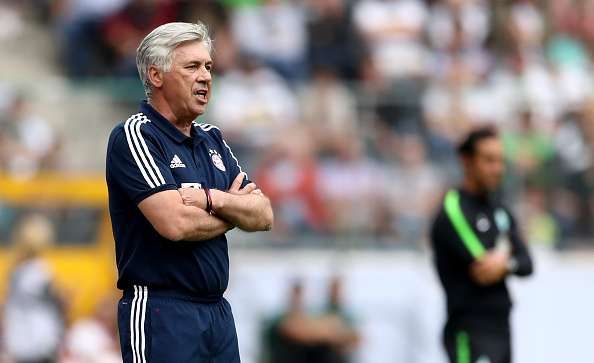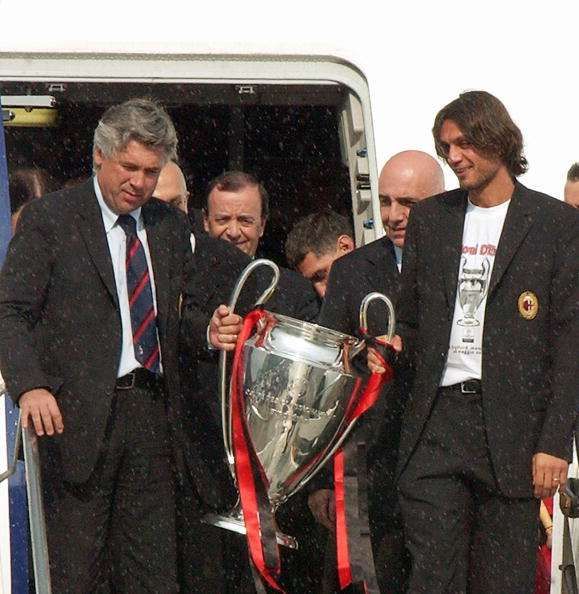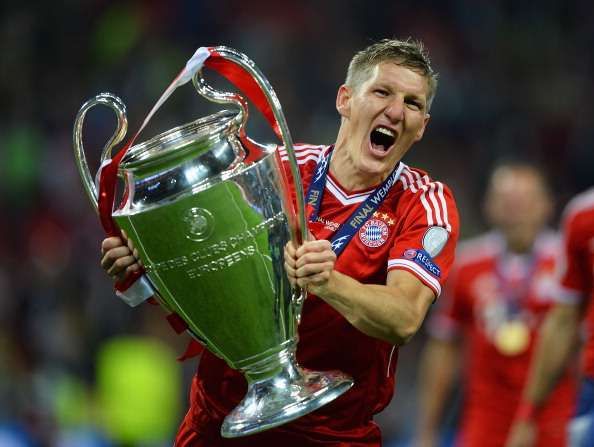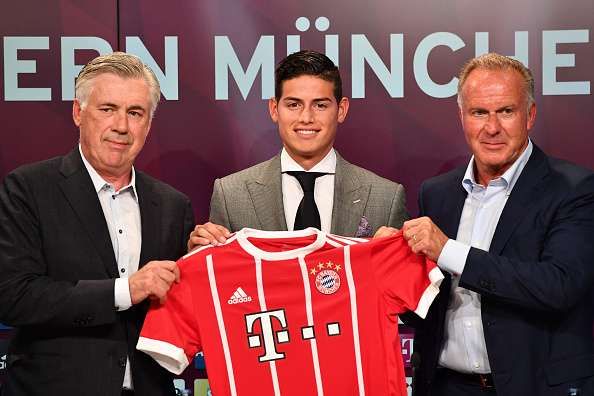
The great Milan diamond and why Carlo Ancelotti will bring it to Bayern Munich

When Carlo Ancelotti graduated his coaching course at Italy’s famous Coverciano training centre (the esteemed breeding ground for coaches such as Antonio Conte, Max Allegri, and Claudio Ranieri), his last action was to submit a thesis. This thesis was titled ‘The Future of Football: More Dynamic’. This would go on to dictate the way that the Italian coach went about managing his teams in the future.
He was in charge of AC Milan when they were at the peak of their powers in the new millennium for eight long years, winning two Champions Leagues in the process. During the spell, he established himself as one of the most tactically sharp and astute managers in the world and has had a stellar career so far having also managed Real Madrid, Paris Saint Germain, Chelsea and now, Bayern Munich.
Mechanic of the great 2000s Milan

A lot of his philosophies are directly influenced by Arrigo Sacchi, having truly understood the essence of control play through the middle after playing under the legendary Italian at the San Siro. He emphasised on possession and attacking play that was both effective and aesthetically pleasing. Ancelotti’s Milan, where he’s spent the longest time managing a single club, is the perfect reflection of that.
Andrea Pirlo’s transformation into a defensive midfielder from an attacking midfielder at that time was something that Ancelotti looked to build upon, giving him the keys to the midfield and letting the totemic Italian maestro dictate the pace of the game. Pirlo was stationed at the bottom of a midfield diamond at that time.
The two midfielders that provided him with a shield, as well as bombarded forward, were Gennaro Gattuso and Clarence Seedorf. They also had the added responsibility of providing the little width that Ancelotti’s 4-3-1-2 or 4-4-2 diamond demanded. Rui Costa was at the tip of the diamond, playing in behind one of the deadliest strikers in Serie A history in Andriy Shevchenko and a brilliant poacher in Pippo Inzaghi.
Until Cafu’s arrival in the mid-2000s to Milan, Ancelotti constantly switched between this diamond-esque structure and a 4-3-2-1, i.e. the Christmas tree. This was partly due to Inzaghi’s recurring injuries and, more importantly, the introduction of Ricardo Kaka.
Kaka at Milan was one of the best players in world football at that time and is currently the last player to have won the Ballon d’Or before the Lionel Messi-Cristiano Ronaldo duopoly swept all before them. In Kaka, Carlo Ancelotti had a player who could do everything – play out wide, play in behind the striker, or even play as a shadow striker. In a Christmas tree structure, he would play in behind Shevchenko and in the opposite half space occupied by Rui Costa.
There are many managers who have attempted variations of the 4-3-1-2 and the Christmas tree structures but none can boast more success than the eyebrow-raising Italian. He used the former in the final of the 2003 Champions League against Juventus and the latter to win the Scudetto in 2004 as well.
Also read: James Rodriguez to Bayern Munich: A good move for both parties?
The Bavarians’ Champions League mission

Fast forward nine years after his last season as Milan’s manager. The Italian is at the helm of German champions Bayern Munich. They achieved what has come to become a customary Bundesliga title but were eliminated from the Champions League by his former pupil at Juventus, Zinedine Zidane. This, of course, doesn’t narrate even half the story as the dominant Germans were victims of rather unfair officiating.
Bayern Munich have conquered almost every competition on offer in their homeland. Yet, they could only manage to conquer Europe only twice – in 2001 and 2013 – since the turn of the 21st century.
Their 2013 UCL victory was part of a legendary treble under the now retired Jupp Heynckes. Pep Guardiola succeeded the all conquering German and followed it up with three Bundesliga titles, although failed to lead his team past the semi finals of the Champions League in those three years.
Bayern Munich in the 2017 transfer window have only signed three players, out of which one immediately went out on loan (Serge Gnabry) and one was brought to Bavaria on loan. Yet, by equipping an already good squad with two key additions in the form of James Rodriguez and Corentin Tolisso, Karl-Heinz Rummenigge & co. have now given Carlo Ancelotti two of the finest midfielders available in the summer window at his disposal.
More importantly, the tactical ripples that this would create seem like a blast from the past.
Also read: 5 midfield combinations we would like to see this season
Preparing for a change in system

Bayern Munich over the last few years have always had one of the best squads in world football, something along the lines of some sort of a fantasy team video game. There is, though, something strange this time around.
The attackers that Ancelotti seems to have at his disposal as he enters the new season are Franck Ribery, Arjen Robben, Kingsley Coman, Thomas Mueller and Robert Lewandowski.
Ribery and Robben, one of the most devastating wing-partnerships in the world are both injury prone and are on the wrong side of 30. They let Douglas Costa go on loan to Juventus with an obligation to buy, and sent Gnabry out on loan as well, leaving their wide options surprisingly thin.
On the other hand, the number of midfielders who can be associated with the central midfield position is, in one word, plenty.
Arturo Vidal, Thiago Alcantara, Javi Martinez, Renato Sanches, Sebastian Rudy, Joshua Kimmich, and James Rodriguez.
The bulk of midfielders that Ancelotti has at the club in comparison to an attack force without proper depth does rightly point to a change in the system. And more importantly, the midfielders’ playing styles aren’t repetitive, as they all have something different to offer.
Alcantara is absolute key even if the former Milan manager does decide to revert to his preferred formations. He’s shown last season that he is one of the finest midfielders on the planet. The Spaniard can do it all but is at his best when he’s orchestrating play and taking on players to beat them for fun. He can be the heart of this new-look midfield.
Tolisso and Arturo Vidal, meanwhile, are players who are physically imposing and can dominate the centre, something the Italian confessed he admires. The Frenchman was one of the finest performers in the French top flight last season. He is multi functional (he played an impressive six different positions for Lyon last season) and has explosive energy – something that will get even better with a player such as Vidal beside him.
Added to this, the marauding presence of David Alaba (who is arguably the best left back in the world) and potentially Joshua Kimmich from the full back slots will help overload the attack. Both the players have an admirable work ethic considering their young age to be able to occupy the whole flank and provide both width and excellent deliveries.
Also read: 5 reasons why Manchester United will regret not signing James Rodriguez
Importance of James Rodriguez

There are a number of reasons for James Rodriguez ending up in Bavaria, despite rumours constantly linking him to Paris, London or Manchester. The key reason is his relationship with the Bayern manager.
The Colombian captain’s best season in a Madrid shirt came under Ancelotti, which is why it is no surprise they have reunited once again at the Allianz Arena.
Rummenigge’s statement when Rodriguez was unveiled read, “We’re delighted we’ve been able to complete this transfer. Signing James Rodriguez was our coach Carlo Ancelotti’s biggest wish, following their successful spell working together in Madrid.”
It is a clear statement of intent and the former Porto star might be the man to be stationed at the tip of the arrow of a potential midfield diamond, giving James the No.10 spot he craves for.
Ahead of James in midfield is where, potentially, Bayern can really come into their element in the attack. When Ancelotti managed Milan, one of the key factors that lead to his two striker set up working wonders is the way that Pippo Inzaghi and Andriy Shevchenko (or, later on, even Kaka) complemented each other. One was a poacher and one was a rather complete forward.
Also read: James Rodriguez: An unfulfilled career and fall of the number 10
Lewandowski and Muller placed on top of this structure is laying the foundation to two of the deadliest and clinical finishers in the world working in tandem. Muller’s position has been ever changing over the years. He can play virtually anywhere across the front line of a team and manage to score, such is the brilliance of Germany’s No. 13. Yet, over the last season, he was restricted to more of an impact player due to the rigidity of Ancelotti’s set up.
A 4-3-1-2 or 4-4-2 diamond would liberate Muller and allow him to work in sync with Lewandowski, which has the potential to be one of the most unstoppable strike-forces in the world. James Rodriguez was never short of quality but confidence, as his career hit a stag in Madrid. He has the potential to become a world beating No.10, and now has a coach who shares his beliefs.
If Ancelotti were to play the 4-3-2-1, James and Muller are both well versed and can flank the Polish hitman in between them.
The former Real Madrid manager has attempted to utilise his favoured formations in the past, only for them to be hindered by either the board’s demands, accusations of ‘defensive tactics’ (i.e. initially at Milan) or even the players’ familiarity with the said formations. At this point in time, Bayern Munich have outgrown the domestic league and need to win the Champions League at any cost.
Analysing the options that Carlo Ancelotti has at his disposal and how he has trimmed the squad to his own liking, it is clear that there is a change in structure for the Bavarian champions on the horizon. The combination of quality of the players available, the mentality of the coach and typical German efficiency from Bayern Munich in the transfer market is about to take German football under the Italian to a whole new dynamic level.
Also read: No more a transfer "window"?